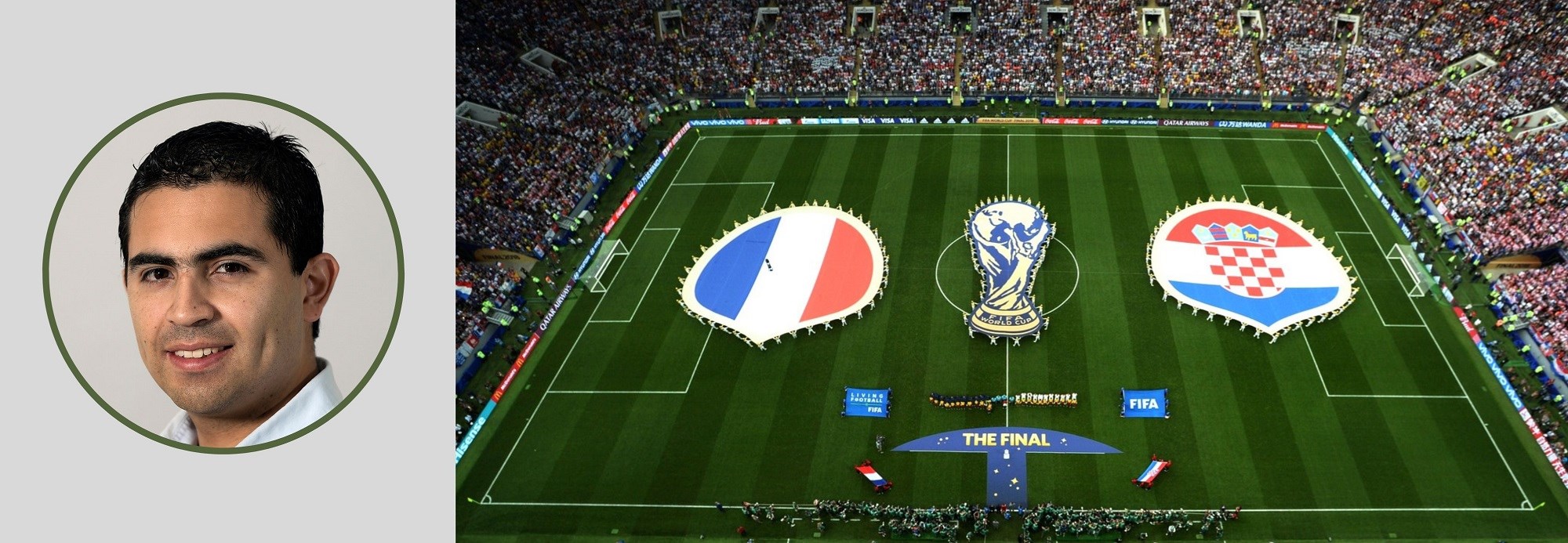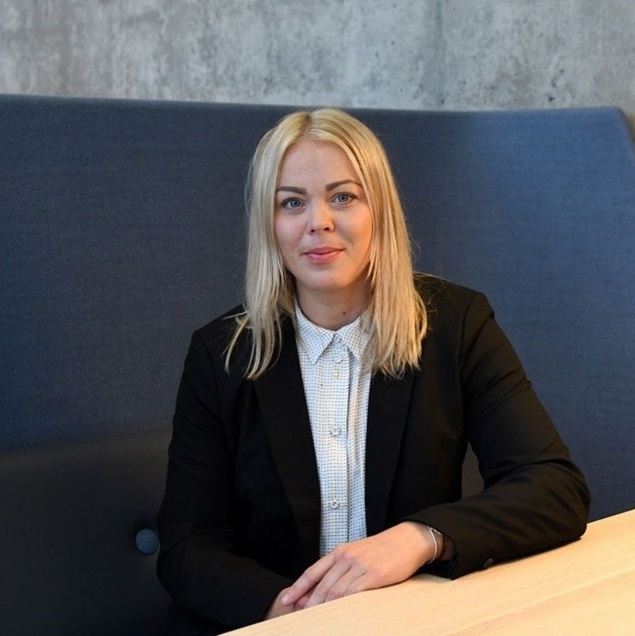
Transformed the Scheduling of Football Leagues and World Cup Qualifiers
Since 2005, several football leagues in South America have used NHH Professor Mario Guajardo’s mathematical models to schedule fixtures. The models are integrated in the qualification system in South American World Cup. As a result, the processes have become more transparent.
Mario Guajardo is a Professor at the Department of Business and Management Science, NHH. Some of the key areas of Guajardo´s research include economic benefits for both the football industry and the football fans.
Co-authors from Argentina, Chile and USA
The research and models developed by Guajardo and his colleagues has led to big changes. It was their effort that ensured that operational analysis was applied to schedule football matches in World Cup Qualifiers.

Professor Mario Guajardo started formulating integer programming models for sports scheduling in 2004-2005. The models define which pairs of teams play each other at which venue in each round of a tournament, considering several criteria.
The schedules were adopted for the first time by the Chilean First Division league in 2005. Now, football leagues in Argentina and Ecuador have adopted the system.
FIFA World Cup
It is not exclusively men´s football leagues, which have used their work. The last five years the Chilean women´s football league has benefited from their modelling approach and scheduling methodology.
Within a few years after 2005, a similar approach was implemented for other leagues:
- The Chilean Second Division in 2007
- The Third and several Youth Divisions in 2013
- Norwegian Squash league in 2013
- The Argentinean Basketball league in 2014 (on the referee assignments).
In 2015, Guajardo developed an integer programming approach to propose a schedule for the South American Qualifiers to the FIFA World Cup (FWC).
10 South American countries
In these qualifiers, 10 South American countries compete for five qualifying slots to the FWC. Every team plays twice against every other team over a period of 2 years.
There are 18 match days grouped into nine double rounds. In each double round, every team plays two games within a few days.
This setup raises some special challenges of scheduling fairness.
Unanimously selected by the 10 countries
Ideally, no team should have a double round break, meaning that in every case they should play one of the games at home and the other one away. This was impossible to achieve by the traditional schedule used for all five World Cup competitions held between 1998 and 2014.

The Bjerksund-Stensland models went global
The model implemented by Guajardo generated a schedule which greatly improves the balance of home-away sequences, ensuring that in every double round all teams play one game at home and one game away. The schedule also keeps some symmetry with respect to the traditional format, so it is easy to understand for the fans and the media.
The schedule was proposed at a meeting of the South American teams in May 2015.
FWC Russia and Qatar
Although several proposals were presented, this schedule was unanimously selected by the 10 countries and was being used for the qualifiers to the 2018 FWC Russia.
The 2022 FWC Qatar implemented the schedule, and is currently being used in the Qualifiers to the 2026 FWC.
Thus, the model has been adopted by practitioners not only once but convincingly to the three latest World Cups.
This appears to be the first application of Operations Research in an international football competition.
May lead to corruption and match fixing
The qualitative impact of improved scheduling is equal to, if not greater than, the quantitative impact. Greater transparency of scheduling criteria and increased credibility is crucial.
This has proven effective towards major concerns internationally:
Manual distribution of fixture dates and referees may increase the risk of corruption and match fixing in football. With Guajardo's mathematical model, the processes have become more transparent.
For the past 20 years, more than 50 sports tournaments in South America have been scheduled using Operations Research. Past measures of the economic impact in the Chilean football industry has been previously estimated as USN USD 59 million. This is due to impact on ticket revenue (41%), increased revenue from TV subscribers (47%), and travel cost savings of TV station and teams (12%).
Social component
Beside the direct impact on the industry´s economy and unlike conventional businesses, football has a large social component. For example, according to FIFA, around 5 billion people engaged with the FIFA World Cup Qatar 2022, following tournament content across an array of platforms. On social media, there were 93.6 million posts across all platforms.
References
- Durán, Guillermo; Guajardo, Mario. Mathematical models for rescheduling Ecuador's 2020 professional football league season disrupted by COVID-19 (Society and Economy 2022)
- Duran, Guillermo; Guajardo Mario, Gutiérrez, Facundo; Marenco, Javier: Sauré, Denis; Zamorano, Gonzalo. Scheduling the main professional football league of Argentina (INFORMS Journal of Applied Analytics 2021).
- Cea, Sebastian; Durán, Guillermo; Guajardo, Mario; Sauré, Denis; Siebert, Joaquín; Zamorano, Gonzalo. An analytics approach to the FIFA ranking procedure and the World Cup final draw (Annals of Operational Research 2019)
- Alarcón, Fernando; Durán Guillermo; Guajardo, Mario; Miranda, Jaime; Muñoz, Hugo; Ramírez, Luis; Ramírez, Mario; Sauré, Denis; Siebert, Matias; Souyris, Sebastian; Weintraub, Andrés; Wolf-Yadlin, Rodrigo; Zamorano, Gonzalo. Operations Research Transforms Scheduling of Chilean Soccer Leagues and South American World Cup Qualifiers (INFORMS Journal of Applied Analytics 2017)
- Durán Guillermo; Guajardo, Mario; Sauré, Denis. Scheduling the South American Qualifiers to the 2018 FIFA World Cup by Integer Programming (European Journal of Operational Research)
- Alarcón, Fernandor; Durán, Guillermo; Guajardo, Mario. Referee Assignment in the Chilean Football League using Integer Programming and Patterns (International Transactions in Operational Research, 2014)
Therefore, attractive tournaments produce fan enjoyment that exceeds the ticket revenues or subscriber fees actually paid.
The incorporation of team requirements and various sporting criteria has also improved process transparency and schedule fairness. Furthermore, the models and methods have been disseminated widely, helping to promote Operations Research as an effective tool for addressing practical problems.
The benefits have been particularly significant in the following areas:
- greater transparency of scheduling criteria and increased credibility
- better scheduling fairness and less player fatigue thanks to better travel sequences
- greater attractiveness, better public order, and more exciting tournaments concentrated towards the end of the season
- fewer undesired rescheduling of matches once the tournament is ongoing
- better performance in international tournaments; better operations at the stadiums
Educational impact
In addition to the quantitative and qualitative effects mentioned above, this research has had a significant educational impact through outreach activities and the creation of content used by schools, universities, and the media. These activities have reached thousands of high school and university students in four countries (Argentina, Chile, Norway, and USA).
The impact beyond the adoption by decision makers themselves is important, Professor Guajardo thinks:
`It highlights sports as context for learning and engaging students to know more about hard optimization modelling techniques. Sport´s cases works well to illustrate to students in a very intuitive problem how otherwise rather abstract methodologies can help in practice´.